OKR in Product Design
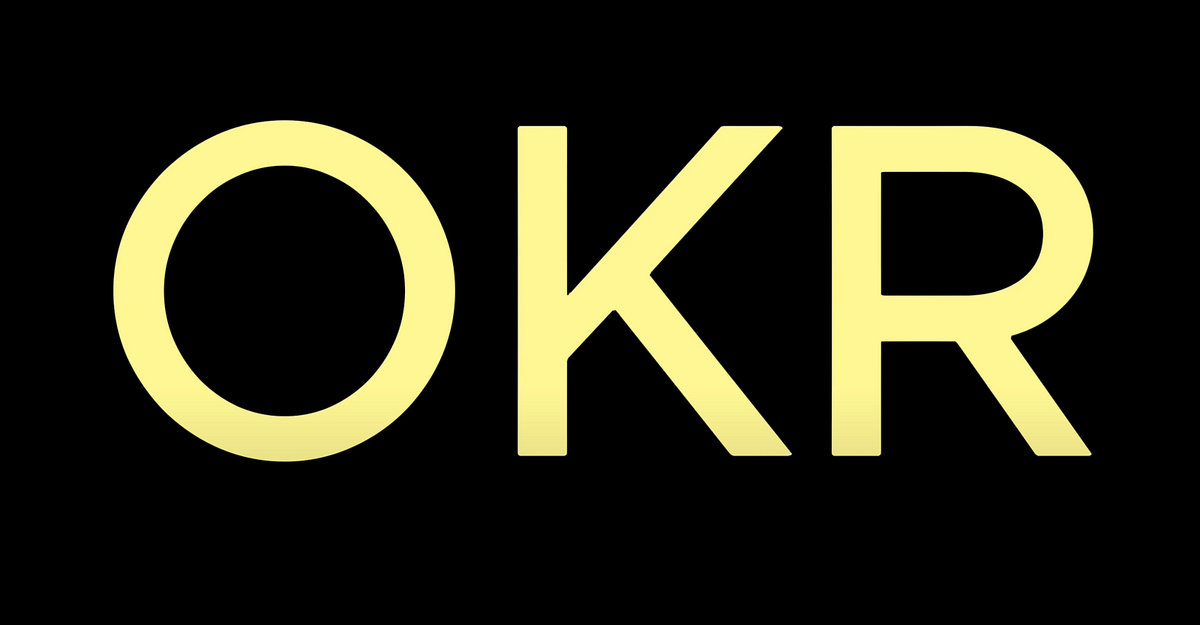
Having clear goals is vital for every organization. It allows team members to focus on the work that matters and deliver measurable results. Defining such goals is never easy.
But there is a secret weapon that can help you with that, and it’s called OKR. OKR is a goal-setting technique that helps teams establish measurable goals. In this article, I will show how product designers can use this technique.
This article is also available in a video format:
What is OKR
OKR stands for Objectives and Key Results. You might think that OKR has only two components, but in reality, there are three components:
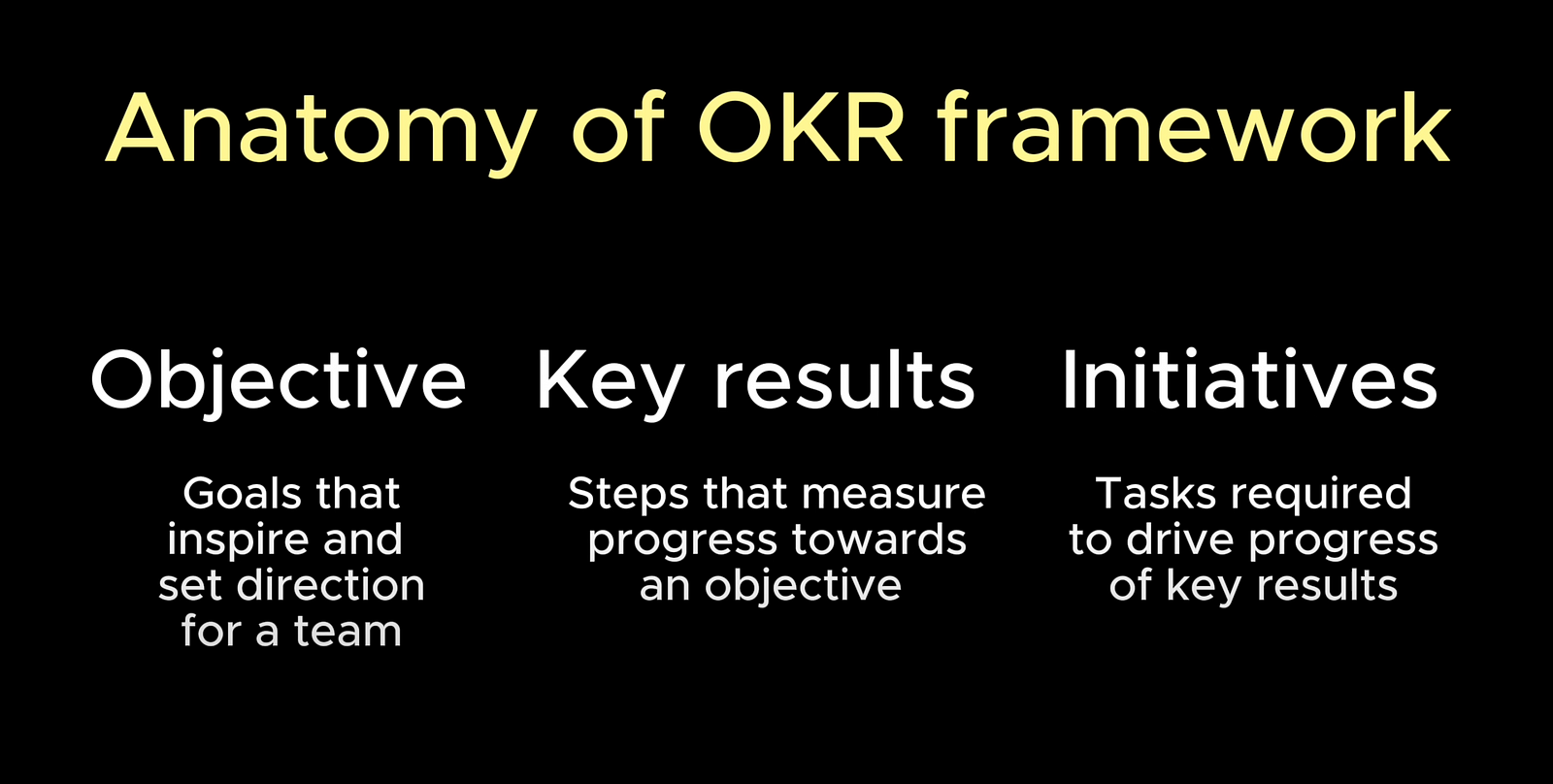
- Objectives are what your team wants to accomplish. Objectives tell the team where to go. They are clear, memorable and inspiring goals.
- Key Results are how the team will measure results towards the objective. There should be 3 to 5 measurable outcomes that contribute to the achievement of an objective.
- Initiatives are actions that the team needs to complete to achieve key results.

How to write OKR
Here is a template that you can use to define OKR.
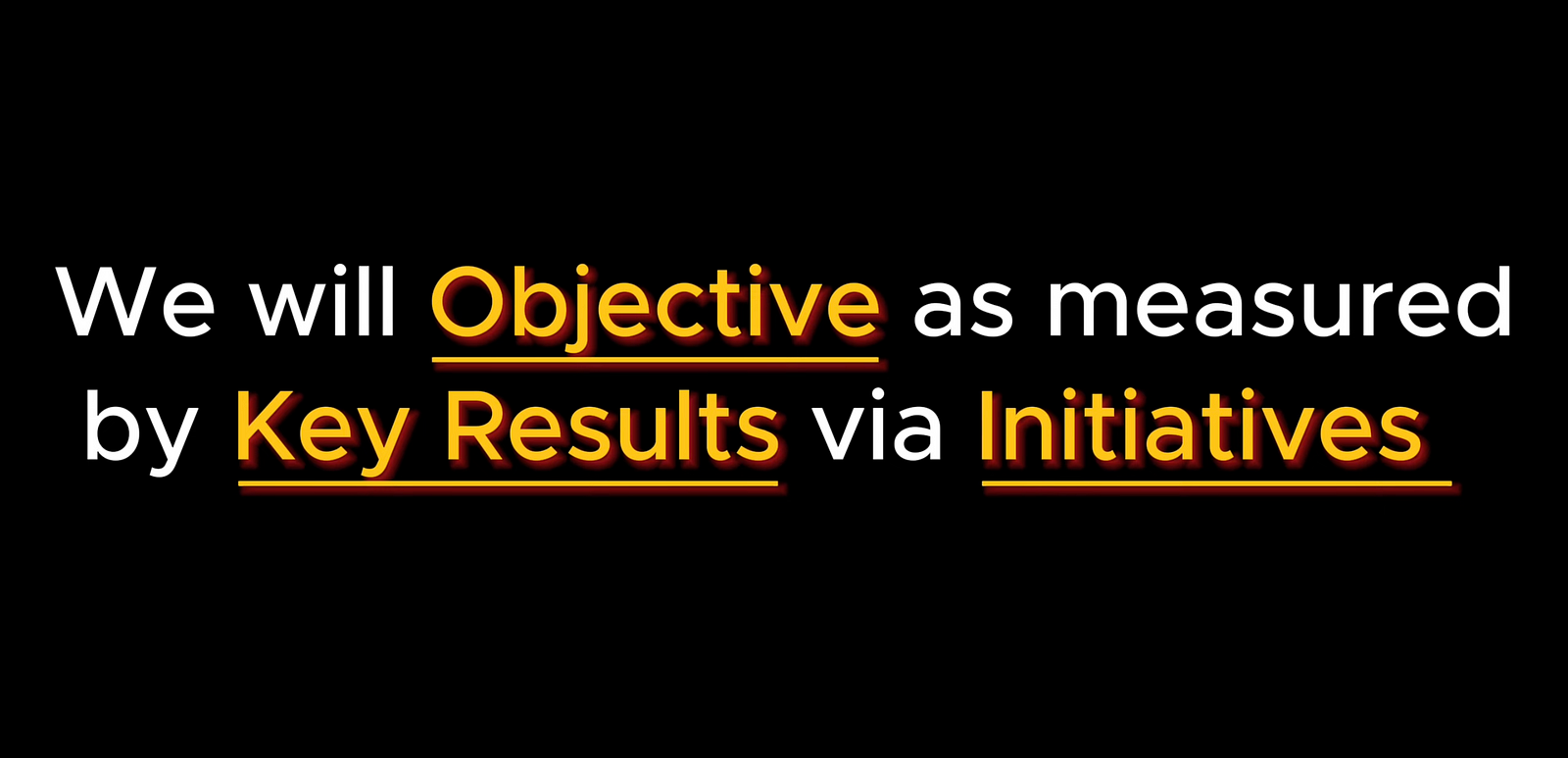
“We will OBJECTIVE as measured by KEY RESULTS via INITIATIVES.”
OKR vs KPI
Before we dive into individual parts of OKR, it’s essential to explain the difference between KPI and OKR. Many people believe that KPI and OKR are the same thing, which is untrue.
KPI and OKR serve different purposes.

KPI stands for key performance indicator, and it is a type of performance measurement. KPI helps us evaluate how well something is working in our organization. For example, we can track customer retention rate to understand how our product retains customers.
OKR helps to understand how the team can achieve something. For example, what should we do if we want to improve our customer retention rate from 60 to 80?
As you probably guessed, OKR and KPI can complement each other. KPI helps to monitor performance and identify areas where the team can do better. OKR can drive innovation and give you a bigger picture.
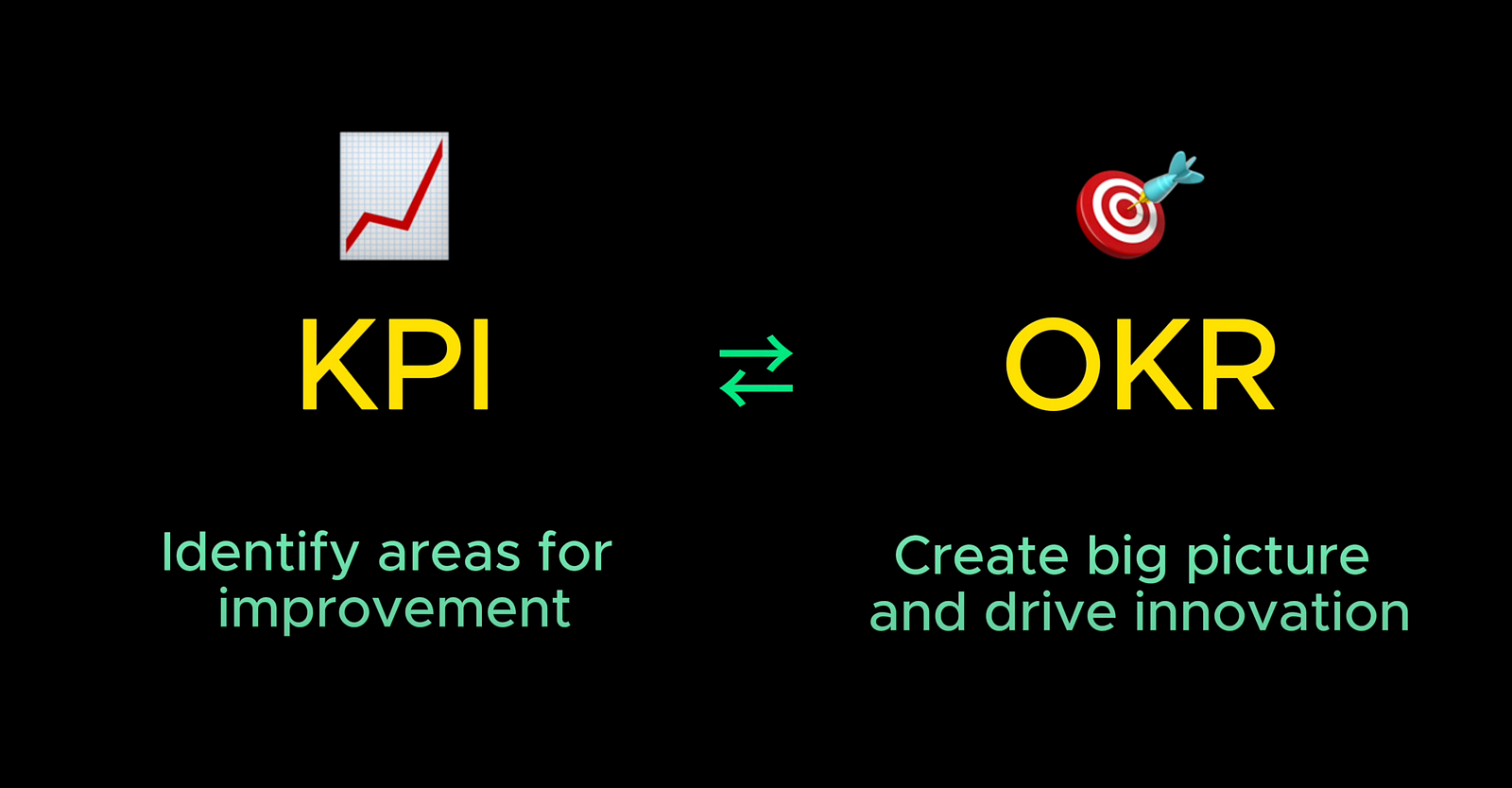
Writing objectives
An objective is a meaningful goal that you want to accomplish. It sets the direction for your organization or team.
Think of it as a destination on the map.
Questions to ask before writing Objectives:
- What is the most important area of our business that we need to focus on?
- Why does this goal matter to us?
- How would we write our objective into a statement that inspires our team?
Writing a good objective is not easy. Let’s compare two objectives.

Continue improving collaboration between design and customer success teams to improve the quality of customer service.
This objective is poorly defined because:
- It’s too wordy.
- Unclear why this objective is important to the company. As a result, no motivation to achieve it.
- There is no information about when the team plans to achieve this objective.
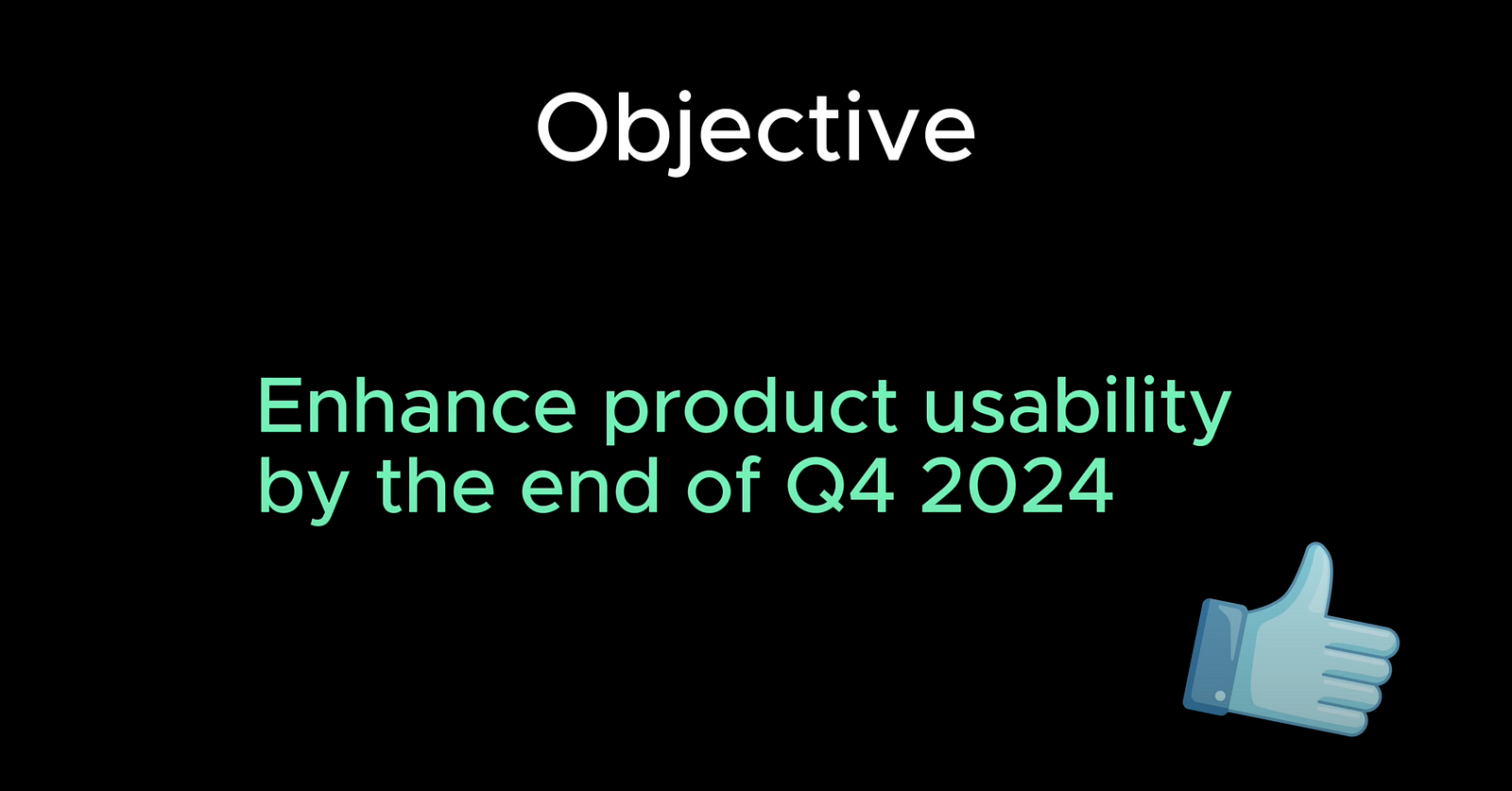
Enhance product usability by the end of 2024.
This objective is well-defined because:
- It’s short and to the point.
- The benefit is clear to the company. Better usability means happier customers.
- Clear information when you want to achieve it.
When writing an objective, remember to keep it simple and focused. It should be like a slogan that fits on a t-shirt.
Writing OKRs is an iterative process — the more you write, the better you will become at it. That’s why I strongly urge focusing on progress over perfection.
Key Results
If Objectives are the aspirational words of a leader, Key Results are the specific numbers and metrics of a scientist. Key results help to specify the objective and measure the progress towards it.
Questions to ask before writing Key Results:
- How will we know if we’re successful?
- How can we measure the impact of our work?
- What metrics help us measure if we were successful?
Let’s compare two key results.

Make the product more usable by following user-centered design principles.
This key result is poorly defined because:
- It’s too vague
- No focus on impact.
- No specifics about how we will measure our results.

Achieve a customer usability score of 80 or above by the end of Q4 2024.
This key result is well-defined because:
- Customer usability score is a measure of usability.
- We’ve defined the bar that we want to achieve.
- And when we want to do it.
It’s important to remember that a good key result is an outcome, not output. Output is something that you do, like a task you need to complete. The outcome is a result of what you do.
Initiatives
Initiatives are the things your team will do to achieve the outcome.
Questions to ask before writing Initiatives
- What do we need to do in order to be successful?
- What can we get done in this period?
- Who needs to be involved?
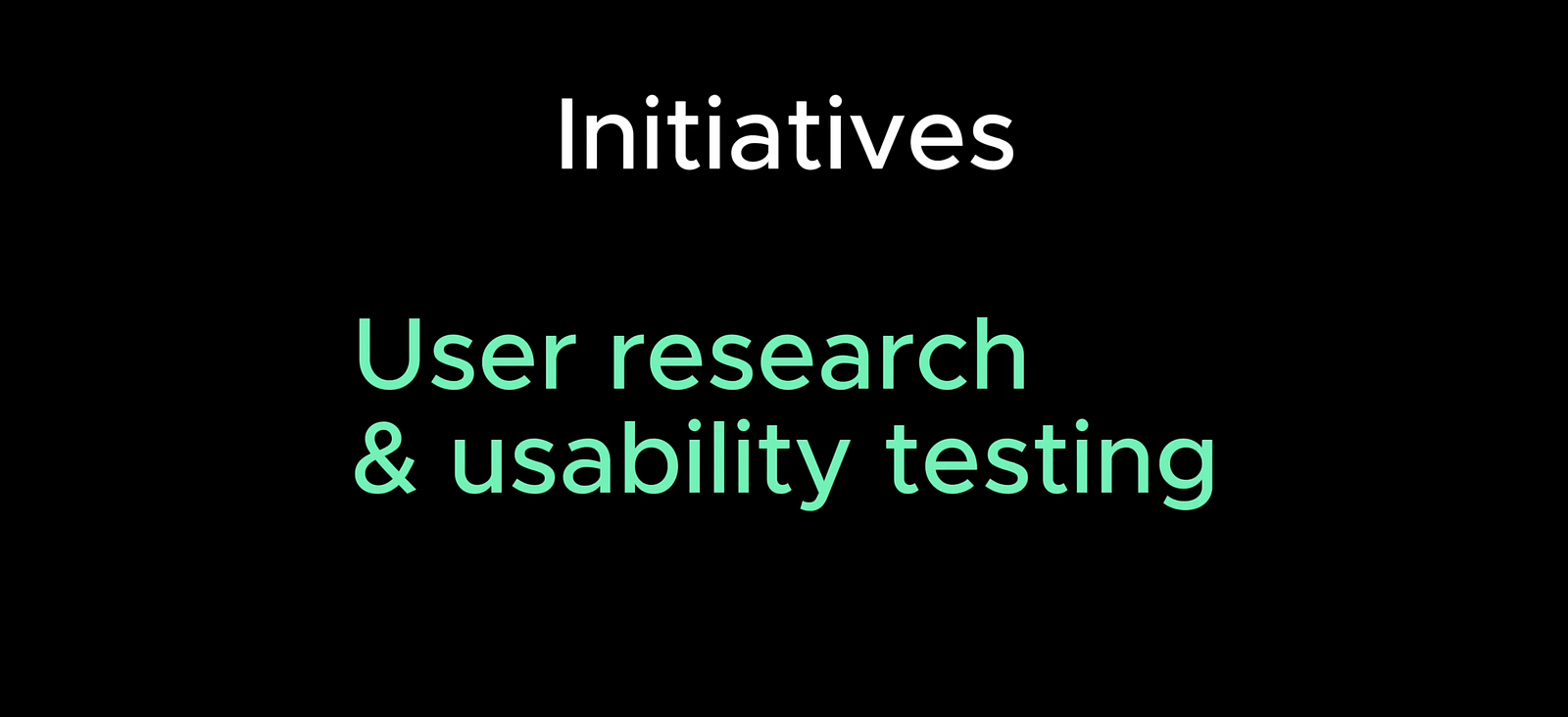
When thinking about Key Results versus Initiatives, remember that key Results are the outcomes you want to happen, while initiatives are outputs — activities you’re performing to get there. Since we wanted to improve customer usability score, we need to invest in user research and usability testing.

When planning initiatives
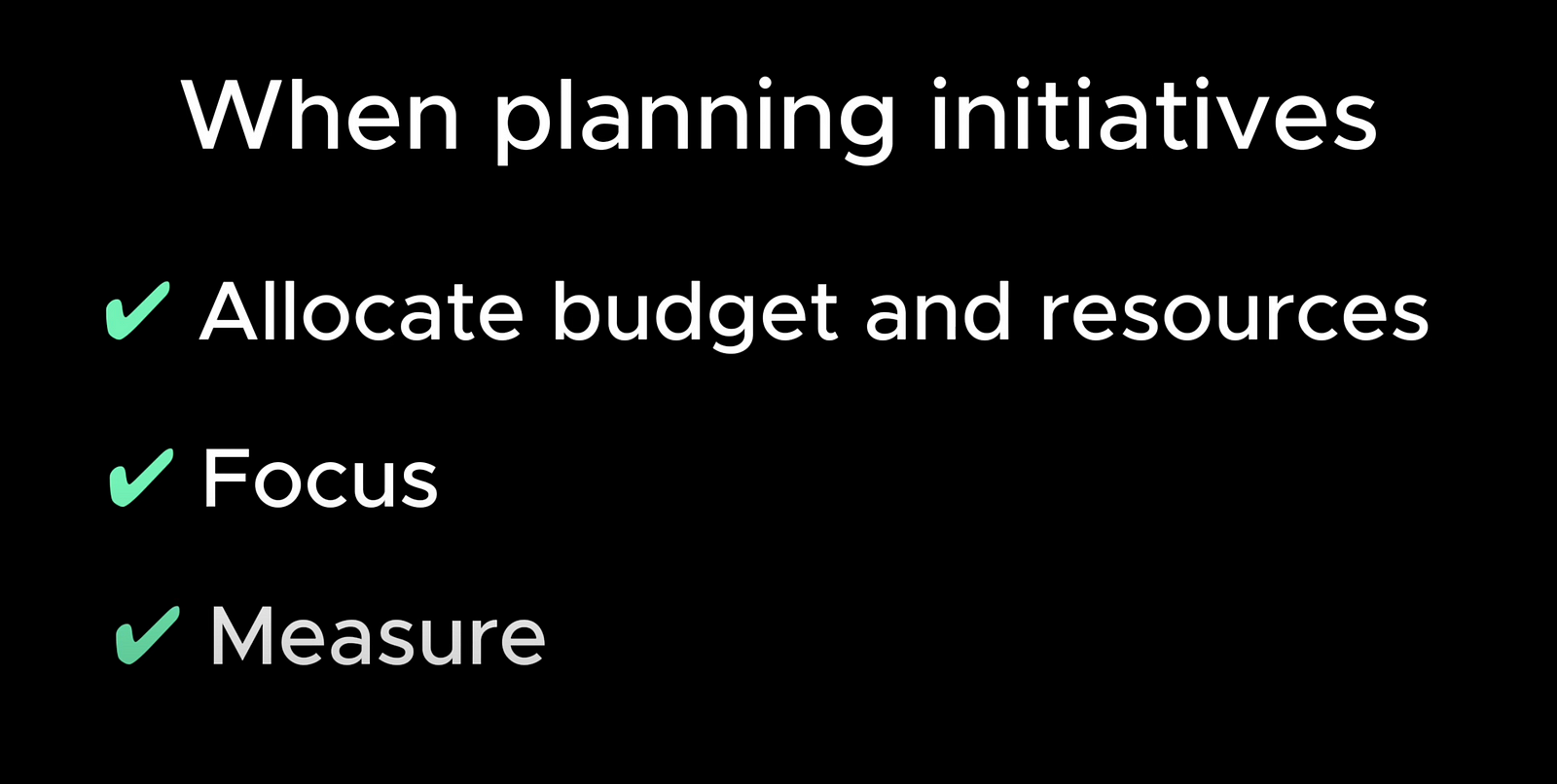
Here are a few things that you need to consider when planning initiatives:
- Make sure you have the necessary resources, time, and money, as well as stakeholder involvement.
- Focus. A big mistake many managers make when planning work is being overly ambitious. OKRs help the team maintain focus, but when the team tries to achieve a few objectives at the same time, it’s easy to lose focus. Because each objective may have many key initiatives, it is usually best to select only one objective per quarter and focus on it to achieve good results.
- Measure. It’s vital to define a set of metrics to monitor key initiatives. It will help you understand if you are moving in the right direction.
Best practices for OKR
- When it comes to OKR, less is more. Don’t set too many OKRs. Avoid putting everything you’re doing in OKR. Focus on critical things first.
- First, define strategy, then define OKR. If team members don’t understand the organization’s purpose and where it is headed, OKR will not motivate the team to do something. OKR simply won’t work because people will be doing their job without a sense of purpose and inspiration.
- Transparency is key. Team goals should be visible to anyone in your organization. It will also boost awareness.